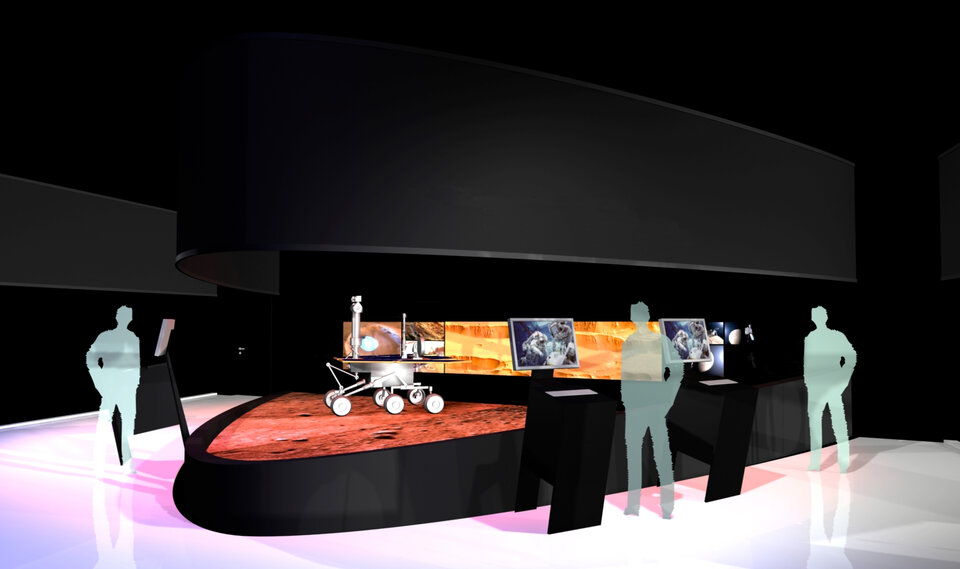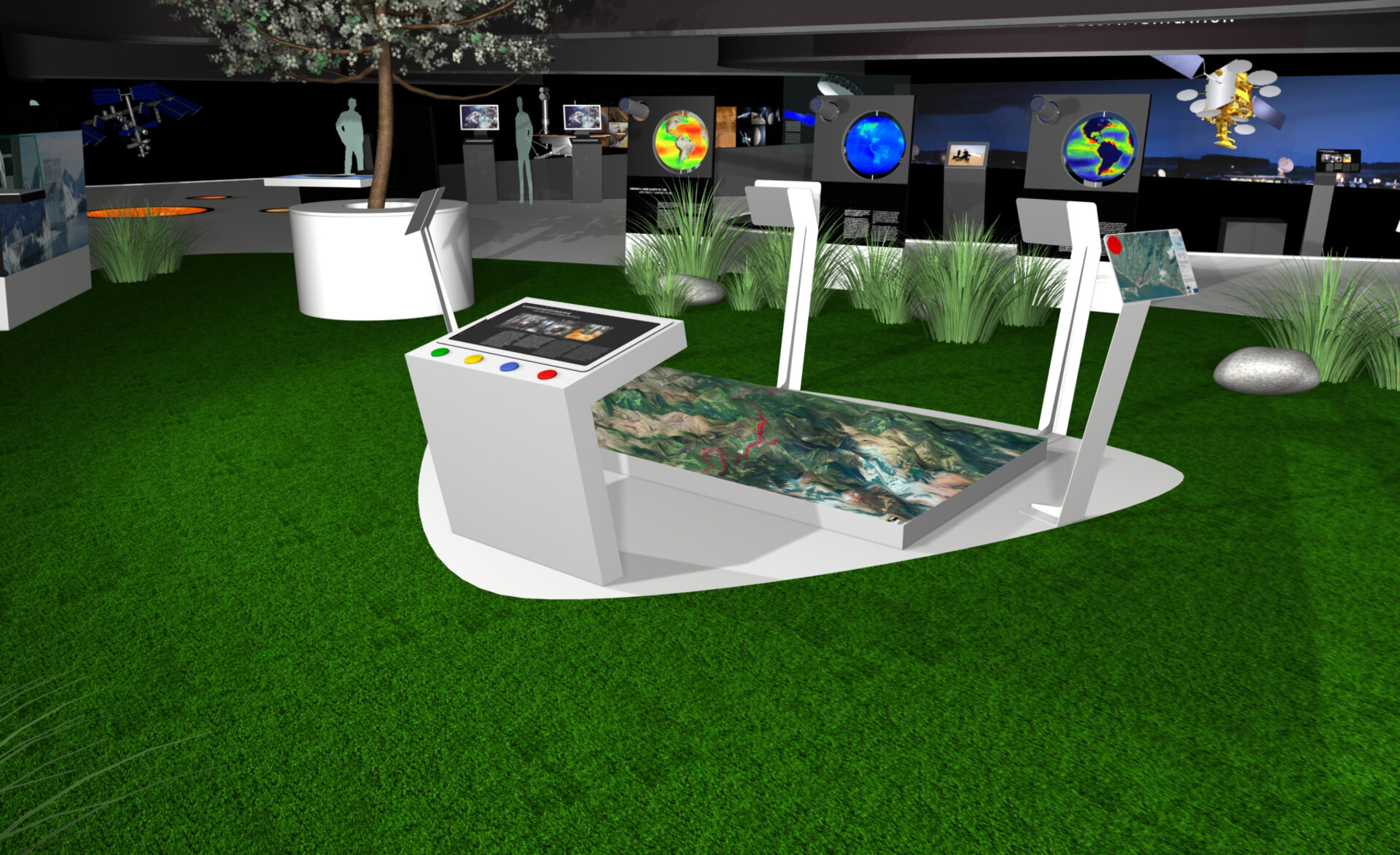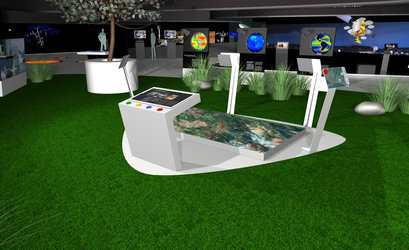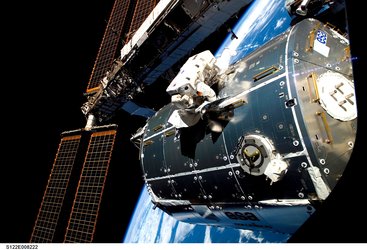Space for Earth at the Berlin Air and Space Show, ILA, 8-13 June 2010
The Berlin Air and Space Show, ILA, one of the world’s largest aerospace trade shows, opens today. Organised every two years by the German Aerospace Industries Association (BDLI), it will be taking place at Berlin-Schönefeld Airport on 8-13 June.
ESA, the German Aerospace Centre (DLR) and the BDLI have jointly designed a special pavilion, ‘Space for Earth’, in the International Space Village (Hall 9), in which visitors can learn more about European space programmes and German national space activities.
“ILA 2010”, explained Peter Hulsroj, ESA Director of Legal Affairs and External Relations (D/LEX), “gives us the opportunity to underline how space technology and applications have helped improve our quality of life and monitor our environment. From medical innovations to engineering solutions, from basic technology to high-tech environmental systems, we use technology and applications that originated in the space sector and which are now generating profits in a multitude of other sectors, significantly contributing to Europe’s growth and employment.
For more than three decades, ESA has developed new technology and satellite systems paving the way for European Identity and Institutions to offer solutions and services that range from improving communication in our everyday lives to developing management systems in inaccessible regions, extreme conditions or emergency situations.”

The pavilion’s name, ‘Space for Earth’, underlines the importance of space systems and applications in facing global challenges, improving our understanding and knowledge, and bringing benefits to Earth.
Visitors can see an impressive Ariane 5 engine and a presentation of Europe’s spaceport at Kourou in French Guiana, where Vega and the Russian-built Soyuz are shortly to be launched for the first time, offering, along with Ariane 5, a wide range of launch services.
Earth observation and climate change will be central to the exhibition, with a special display of ESA’s Earth Explorer missions, GOCE, SMOS and CryoSat, as will the EU-led GMES programme - Global Monitoring for Environment and Security.
Earth Explorer missions focus on the atmosphere, biosphere, hydrosphere, cryosphere and the Earth's interior with the overall emphasis on learning more about the interactions between these components and the impact that human activity is having on natural Earth processes. Data collected will help scientists to understand how our environment and climate are changing and how to improve the way we manage the Earth’s precious resources.
Europe’s telecommunications and technology will be presented, including Alphasat and Alphabus, the next generation of large platforms for high-power telecommunications satellites, and Small GEO, a small geostationary satellite platform.
‘Space for Earth’ is also seen in the context of navigation. Galileo, Europe’s own global navigation satellite system, is shown, with special focus on EGNOS, European Geostationary Navigation Overlay Service, applications, including aviation and agriculture.
Stunning images of the ISS will be displayed, including Europe’s contributions - the Columbus laboratory, Automated Transfer Vehicle,ATV, Cupola and Node 3 - and European astronauts. Visitors will have an overview of the scientific experiments carried out in weightlessness, from material sciences to human physiology, from fluid science to plant biology, and from the origins of life to observation of our planet.

The next ATV to be launched and the Advanced Re entry Vehicle, ARV, will also be exhibited. The ARV builds on the technology of the Service Module developed for the ATV. The current Cargo Carrier will be replaced with a re-entry capsule to return payloads and experiments safely back to Earth.
‘Space for Earth’ will also enable us to better understand our surrounding Universe. Visitors will discover the European missions and results of exploration of the Solar System and cosmos.
Visitors will be introduced to ESA’s Herschel mission and its latest images. These are revealing hidden clouds of cold gas and helping astronomers study how stars are born, evolve and die in the galaxies.
Future challenging projects include the ESA-NASA ExoMars programme to explore the red planet and look for signs of life, BepiColombo to study Mercury, the closest planet to our Sun, and Gaia to map our galaxy in unprecedented detail.
The space pavilion at ILA is open from Tuesday 8 to Sunday 13 June, with trade visitors’ days on 8-10 June, and access to the general public from Friday 11 June. Throughout the week, a conference centre in the space pavilion will host a number of presentations and events.
Please use the link on the right-hand menu bar to visualise the full programme.
For further information, please contact:
Maria Menendez
Head of Exhibition Office
Communication and Knowledge Department
Tel.: + 33 1 5369 7167
e-mail: Maria.Menendez@esa.int
Wendy Slater
Exhibitions Officer
Communication and Knowledge Department
Tel.: + 33 1 5369 7418
e-mail:Wendy.Slater@esa.int
Annie Sorlin
Epsec, Exhibition Assistant
Communication and Knowledge Department
Tel.: + 33 1 5369 7590
e-mail: Annie.Sorlin@esa.int






